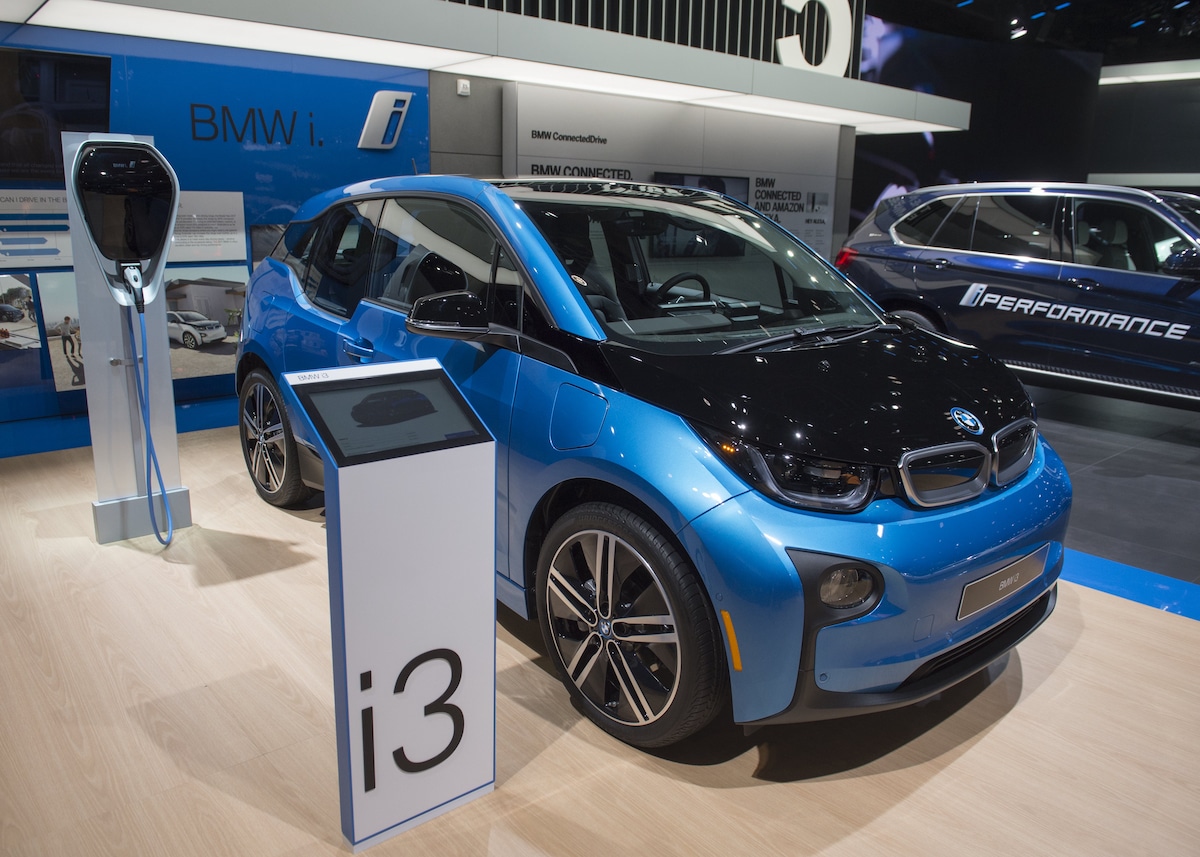Products You May Like
The BMW i3 plug-in hybrid vehicle during the 2017 North American International Auto Show in Detroit, Michigan on Jan. 10, 2017. SAUL LOEB / AFP via Getty Images

Why you can trust us
Founded in 2005 as an Ohio-based environmental newspaper, EcoWatch is a digital platform dedicated to publishing quality, science-based content on environmental issues, causes, and solutions.
BMW, Peugeot and Renault all make popular plug-in hybrid electric vehicles (PHEVs), but are the cars as climate-friendly as they claim? Not according to a new set of on-road tests conducted by researchers who say the vehicles emit much more carbon dioxide than official measures from standard lab tests report.
According to the researchers at Graz University of Technology in Austria, assertions by the BMW 3 Series were especially inaccurate, with the PHEVs emitting more than three times the carbon dioxide claimed, reported The Guardian.
More From EcoWatch
“Plug-in hybrids are sold to drivers and governments as part of the climate solution. The truth is they pollute far more than advertised and are a dangerous distraction from full electrification. In city and commuter tests, they pollute significantly more than advertised,” said Transport & Environment UK Director Richard Hebditch in a press release.
PHEVs use a gas- or diesel-powered engine plus a small battery, which carmakers say allows drivers to go long distances with zero emissions. Environmentals argue that the vehicles are less climate friendly and produce much more pollution than advertised.
The BMW 3 Series wasn’t the only popular PHEV tested that emitted much more carbon than the carmaker claimed. The Renault Megane polluted 70 percent more than its official test rating and the Peugeot 308 was 20 percent above its official rating, reported The Guardian.
Regulations based on the worldwide harmonized light vehicles test procedure (WLTP) are used to test fuel emissions for cars, but critics have said the artificial conditions of the lab don’t reflect real world driving. The researchers from Graz University drove cars around the city instead, using a portable testing system.
Despite the implications of inaccurate pollution measurements for the environment, carmakers say they have to include figures from WLTP in their advertising.
Not only did the cars in the study pollute more than they claimed, the electric driving range of PHEVs is limited, according to the European Federation for Transport and Environment (T&E), which commissioned the tests.
In the city of Graz, all three of the PHEVs had an electric range of less than 31.06 miles, the T&E website said.
“Plug-in hybrids are sold as the perfect combination of a battery for all your local needs and an engine for long distances. But real-world testing shows this is a myth. In city tests, just one of the PHEVs has the electric range advertised, while all three emit more than claimed in commuter driving. Lawmakers should treat PHEVs based on their actual emissions,” said Anna Krajinska, vehicle emissions manager at T&E, as The Guardian reported.
Based on the tests, T&E said governments should be focusing on providing incentives for the purchase of vehicles that are fully electric instead of hybrids. The UK government is currently considering which hybrids will be allowed to be sold between 2030 and 2035, when a total ban on new hybrid sales comes into force. Some industry insiders predict a minimum range requirement of zero emissions will be implemented for the sale of new cars.
According to analysis by consultancy firm Kearney, by 2035 the car industry will have used up its remaining carbon budget and will have exceeded it by up to 75 percent by 2050. Electric vehicle manufacturers Rivian and Polestar commissioned the analysis, which said cars worldwide will have to be zero carbon in order to meet Paris Agreement goals, adding that supply chain emissions will also have to be slashed by carmakers.
“The UK is publicly committed to phasing out of sales of new petrol and diesel cars by 2030, but has left a backdoor for fossil fuels in plug-in hybrids. The reality is that PHEVs are still big polluters. Unless there are tight rules about what will be eligible, we risk locking in CO2 from cars right through the 2030s rather than the fully electric future we need,” Hebditch added.
Subscribe to get exclusive updates in our daily newsletter!
By signing up, you agree to the Terms of Use and Privacy Policy & to receive electronic communications from EcoWatch Media Group, which may include marketing promotions, advertisements and sponsored content.
